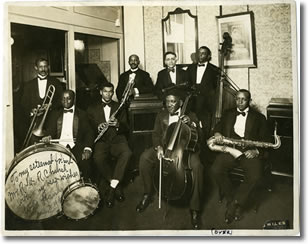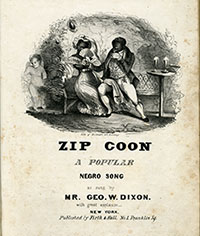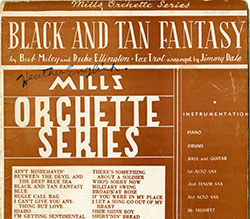Political Separation and Exclusivity: Musical Dialogue and Transcendence
by Dale Cockrell, Director, Center for Popular Music, Middle Tennessee State University; Professor of Musicology Emeritus, Vanderbilt University; Research Associate, Odeion School of Music, University of the Free State, South Africa

Unlike bodies, money, or spaces, music is not easily contained. Merely waves in plein air, it has no obvious value: it can’t be eaten, drunk, breathed, jailed, beaten, or used in any manifestly physical way. Communities have often gone to great efforts to bottle it, to capture its ephemeral, effervescent nature, for it does express identity powerfully through association. Yet communities have almost always failed at containment: sound waves tend to fly off and land in yet different (often “other”) communities, building aural links that promise, even promote, transcendence. Music thus grows dialogically by mediating between expressions of identity—absorbing, modifying, leading, growing always towards the new.
Music’s agency is then not much about empowering a single group of people, but about the conversation on identities that happens between communities. If the “Jim Crow” body of segregation laws in the American South appeared at the time to be monolithic, the apparently harmless sound waves washing over and around it would be critical in turning minds and bodies towards tearing it down.
I don’t know who first applied the qualifier “Jim Crow” to legislation defining and confirming harsh segregation in the American South, but it is hard to imagine any more appropriate or evocative expression. The term, of course, comes from a song, first performed publicly in Louisville, Kentucky, in September 1830 by Irish-American actor/dancer/singer Thomas Dartmouth Rice. Legend has it that Rice observed a slave on a wharf shuffling to a disjointed but strangely hypnotic tune that he sang to extemporized words. Rice then appropriated the dress, demeanor, tune, dance, and lyrics and brought them to the stage in theatrical blackface. Whatever the legend, by October 1830, Rice was enjoying extraordinary success with the act. Rice brought “Jim Crow” to New York City in 1832 and it became the rage, one of the century’s biggest hits. He took the act to Europe in the mid-1830s and enjoyed perhaps even greater acclaim for his “jumpin’ ” Jim Crow dance and song. Although far from the first blackface theatrical act (William Shakespeare’s Othello was first performed in 1604!!), “Jim Crow” set the stage for the rapid development of blackface theatrical entertainment in the 1830s and 1840s. With the establishment of the blackface minstrel show in 1843, the genre was on its way to becoming the most popular form of musical theatrical entertainment in the whole of the 19th century.

Near the heart of the genre, minstrelsy was about the vicious denigration and containment of African Americans, whether Southern rural slaves (generally expressed through Jim Crow-type characters) or Northern urban freedmen (generally expressed through Zip Coon-type characters). More significantly, though, minstrelsy through its representation of African Americans established the lens through which white (and even black) Americans came to view race. For example, minstrelsy convinced audiences that black Americans were prone to violence; lustful and over-sexualized; given to athletic physicality; and excellent singers, dancers, and musicians. The barest scratch of racial consciousness today would reveal remnants of these same stereotypes. These are realities for African Americans that followed directly from the representations of minstrelsy. Thus, “Jim Crow” segregation was a natural extension in the minds of its proponents from theatrical representation to lived reality, a searing example of the power of music and theatre in shaping social identity, consciousness, and even politics.
Many big ideas contain within the seeds of their own destruction, however, and Jim Crow legislation gives example to that. An important seed was the song “Jim Crow” and all that it wrought.
“Jim Crow” was originally a song about giving voice to exploited white working-class Americans, many of whom saw themselves in a survival alliance with exploited black working-class Americans. The many hundreds of extant verses to “Jim Crow” are unequivocal in their opposition to class-based exploitation. Early blackface at core was not so much a reference to African Americans (although it was too—this is complicated stuff!) as it was to centuries-old masking theatricals of social inversion, such as mumming, charivari, or Mardi Gras. Blackface enabled those of the voiceless lower classes to speak out through extravagant masking, wild dancing, noisy music, and pointed texts.
Although blackface masking was essentially ripped from its subversive folk context and appropriated for the stage, the wild dancing, noisy music, and double meanings used in the lyrics were retained. As the nineteenth century wore on and “Jim Crow” became less a song and more a form of social legislation, multicultural America’s love of wild dancing, noisy music, and outrageous statements—often conceived, composed, and/or performed by African Americans—would stand in subversive opposition to the hateful legislation that bore the name of the song.
* * * * *
Shortly after the Civil War, African Americans gained widespread access to the American musical and theatrical stage. One well-known example would be the Fisk Jubilee Singers and their transcendent success with introducing white America (and the world!) to African American spirituals. These “sorrow songs” (according to Frederick Douglass) came out of a time and condition of slavery, but spoke of a better life “on the other side,” generally beyond that of the mortal flesh. Energizing rhythms and extemporized melodic and textual embellishments gave rich purpose and promise to the present moment through music, while in social reality the moment was certainly less rich and promising. So convincing was this music that by the 1890s, when Antonin Dvořák wanted to write a "New World Symphony" that sounded like America, he had to turn to the spiritual stylistic idiom to accomplish it. In fact, the “Going Home” largo movement, a composed “concert spiritual,” likely had some input from Dvorak’s assistant, the African American composer H.T. Burleigh.
Yet, African Americans musicians had been making their way onto other public entertainment stages even earlier than the Jubilee Singers, ironically as blackface minstrels. The work was demeaning, to be sure, but it was the stage, there were audiences, the money was decent, and it beat doing menial labor. It also enabled musicians, dancers, comics, and actors time and space to perfect their craft. They continued to “black up” well into the twentieth century, just as white performers did. But by the 1870s African American songwriters were writing and publishing songs that appeared regularly on pianos in middle-class white America. James Bland produced hit after hit, including songs with highly syncopated rhythms, such as "O Dem Golden Slippers." His "Carry Me Back to Old Virginny" was the Virginia state song for much of the twentieth century.
Sam Lucas might be an even better example of how an African American minstrel performer introduced popular audiences to African American musical traditions. The fifty or so songs that Lucas published included a number of "commercial spirituals" that took the nation's mania for African American spirituals—spearheaded by the Fisk Jubilee Singers—and figured out how to monetize it through sheet music sales and minstrel show performances. Lucas' rhythms are crisp and syncopated (much like early ragtime in sound), and his music often relied upon black folk music stylistic traditions. As these songs wormed their way into white musical consciousness, so too came a new regard and appreciation for an authentic African American culture beyond the representations of culture found in minstrelsy. Precisely at the time that the Jim Crow legislative frenzy was at its peak, white Americans, North and South alike, were hearing and enjoying what were essentially "freedom songs" (see http://popmusic.mtsu.edu/lucas/lucas.html).

The trajectory from the early black blackface minstrels through the history of popular music is well-documented and well-known. Bert Williams and George Walker, who brought minstrel stereotypes to vaudeville, sought to reconcile playing smart coon/dumb coon blackface characters in public with living dignified private lives. Subtle subversion was their ticket. Williams in particular broke important color barriers in the Ziegfeld Follies and on Broadway. Bessie Smith (from Chattanooga), among others, broke race and gender barriers by performing without blackface in vaudeville, although most often in "Jim Crow" theaters and shows for African Americans where the subversive aspects of her music was patently obvious to the audience. By the 1930s, 1940s, and 1950s increasing numbers of African American performers were entertaining audiences that often included whites and blacks together. As has been the case in many times and in many places, musicians found that they could sing and play what could not be said.
* * * * *
Narratives of African Americans and their music generally focus on the performers and creators who lived in the spotlight: those who with extraordinary talent or a bit of good luck broke through to wide public consciousness. To lower the gaze a bit, though, reveals an even more complicated, important, and little understood world of social, political, and musical consciousness.
For example, there were many thousands of musicians—black, white, North, South—who made a living making music far from the spotlight or the recording studio. In important ways, these have traditionally been the torchbearers for musical culture because generations typically learn music-making and music-loving from direct personal experiences with the "little" musicians and not the Ellingtons, Hollidays, or Lucases. Often these are teachers, whether in schools, private homes, juke joints, colleges, or barbershops. Music Scholars Doug Seroff and Lynn Abbott include good examples from Tennessee in To Do This, You Must Know How: Music Pedagogy in the Black Gospel Quartet Tradition (2013).
Others out of the spotlight include the musicians who night after night played in the tens of thousands of brothels, dance halls, and concert saloons that blanketed the nation during “the golden age of prostitution” from ca. 1850-1917. Research suggests that during this “golden” period between a half and a third of all the nation's professional, full-time musicians were employed in such spaces and making such music, spaces where prostitution and its music was an important aspect of the "entertainment" economy.
Across the nation, the places where commercialized sex was available tended to be places where racial barriers were porous or non-existent, where blacks, tans, and whites commingled. At many of these, black bodies and white bodies rubbed against each other on dance floors to music that all races understood and enjoyed. For example, the red-light district in 1910s Memphis was centered on Gayoso Street and revolved around the famous “Stanley Club” brothel, owned and operated by wealthy African American madam Grace Stanley. Nashville’s red-light district covered eight blocks or more in the heart of the city. The chief of police calculated in 1915 that there were sixty-five brothels in the city, which did not count dance halls or concert halls; a female social worker tabulated ninety-four “resorts” during the same period. Most all of these featured music designed to advance the economics of the house, music described as “[l]ewd and lascivious [that] is constantly heard at all of [the houses of prostitution],” according to a lawsuit filed in Chattanooga in 1908. The Memphis Commercial Appeal stated in 1907 that “[d]ives have been flourishing as they have never before. Hundreds of lewd women . . . have been imported. Street-walkers have been as thick as wasps in summer time.” In an attempt to shutter the city’s brothels, the Memphis City Council in 1915 made it illegal to have music or dancing in any of the places where prostitution was thought to flourish, an action that immediately “placed nearly three-fourths of the houses out of business.” By the summer of 1917, the Commercial Appeal estimated that nearly one thousand prostitutes had been thrown out of work.
Ragtime came out of brothels in the 1890s and 1900s and quickly swept the nation. This heavily syncopated dance music, initially performed and written by African Americans, was based upon white middle-class dance forms and often published as sheet music for consumption in middle-class parlors (as well as in the brothels). By the 1904 World’s Fair in St. Louis, ragtime was being played and devoured by people of whatever race, class, or gender. The terms “ragtime,” “jazz,” and “blues” were virtually interchangeable in the 1910s and ‘20s. That they became discrete stylistic entities by the end of the 1920s is more the result of the marketing of recordings.

During this time too, it was not clear the racial identities of these musics. For example, Paul Whiteman was probably the best-known “jazz” musician of the 1920s, and it was Whiteman who commissioned George Gershwin’s Rhapsody in Blue, first performed by Whiteman’s orchestra in 1924. Jimmie Rodgers, whose explosive popularity began in 1928, was singing what he (and his audience, presumably an audience initially both white and black) considered the blues. His “Blue Yodel” songs are in form and sensibility remarkably like what we generally consider to be “African American blues.” Country music and jazz fans might be surprised to learn that Rodgers’ 1930 recording of “Blue Yodel #9” was backed by Louis Armstrong on trumpet and Lil Hardin Armstrong on piano.
In summary, music frequently served as a form of dialogue between black and white southern populations. If it gladdened the heart and caused the feet to move, no one cared much for its color. While Harlem’s Cotton Club may have been for white patrons, Duke Ellington’s music ironically spoke subversively of accommodation. While Jimmie Rodgers was selling records to low-class southern whites, he was playing and singing the blues, music that ironically spoke subversively of accommodation. Given this complicated, even transgressive, picture it does not so much surprise that young people of the 1950s would rebel against social, cultural, and political constrictions that had long been thoroughly undermined by the music.
Further Reading:
Michael Brim Beckerman, Dvořák and His World (Princeton: Princeton University Press, 1993).
Tim Brooks, Lost Sounds: Blacks and the Birth of the Recording Industry, 1890-1919 (Urbana: University of Illinois Press, 2004).
Dale Cockrell, Demons of Disorder: Early Blackface Minstrels and Their World (Cambridge: Cambridge University Press, 1997).
R.A. Lawson, Jim Crow's Counterculture: The Blues and Black Southerners, 1890-1945 (Baton Rouge: Louisiana State University Press, 2010).
W.T. Lhamon, Raising Cain: Blackface Performance from Jim Crow to Hip Hop (Cambridge, Mass.: Harvard University Press, 1998).
Karl Hagstrom Miller, Segregating Sound: Inventing Folk and Pop Music in the Age of Jim Crow (Durham, N.C.: Duke University Press, 2010).
Jocelyn R. Neal, The Songs of Jimmie Rodgers: A Legacy in Country Music (Bloomington: Indiana University Press, 2009).
Terry Waldo, This is Ragtime, with a foreword by Eubie Blake (New York: Da Capo Press, 1991).
Andrew Ward, Dark Midnight When I Rise: The Story of the Jubilee Singers, Who Introduced the World to the Music of Black America (New York: Farrar, Straus and Giroux, 2000).
Suggested Citation
Cockrell, Dale. "Political Separation and Exclusivity: Musical Dialogue and Transcendence." Trials and Triumphs: Tennesseans' Search for Citizenship, Community, and Opportunity. Middle Tennessee State University, 2014. Web.